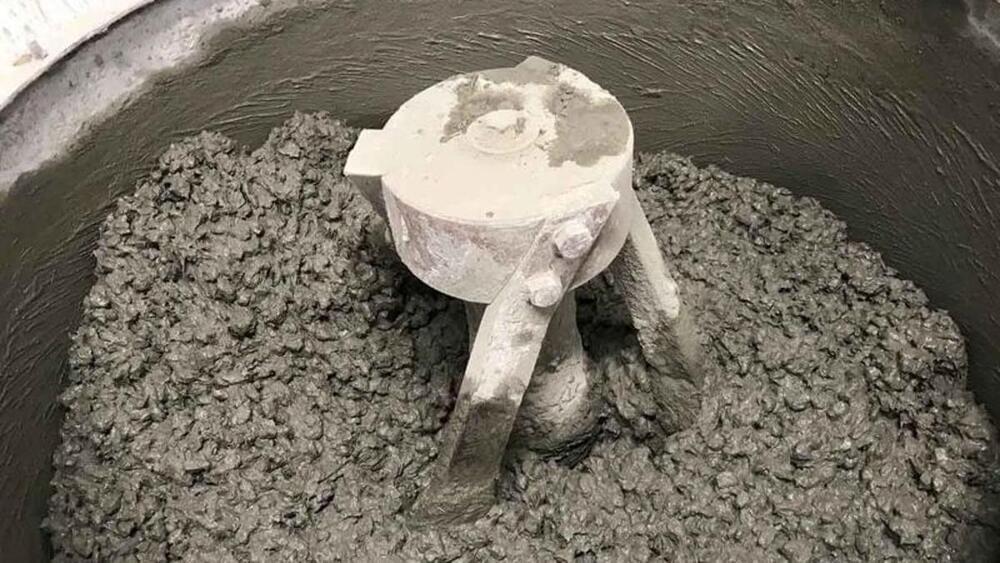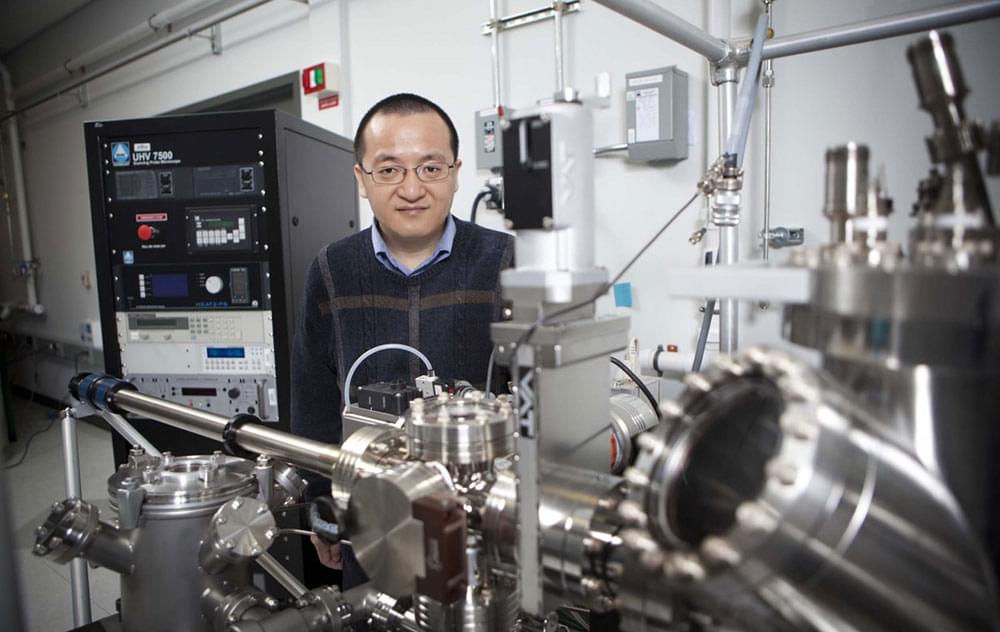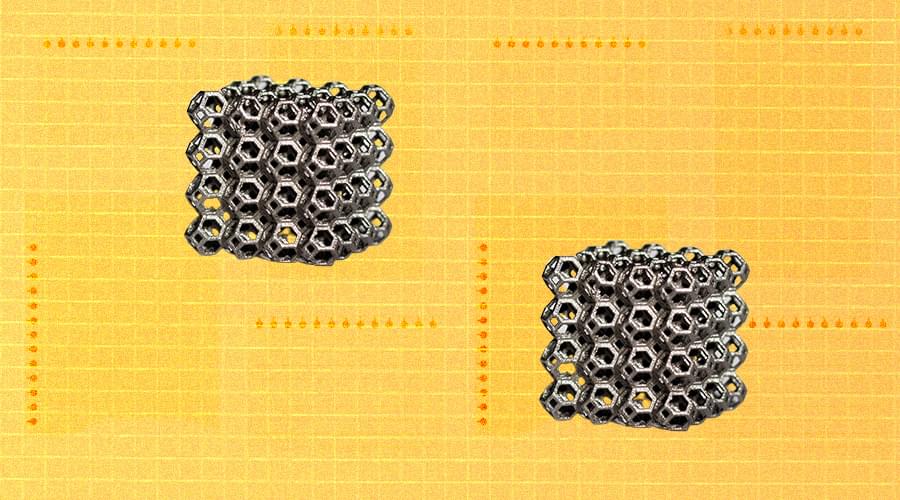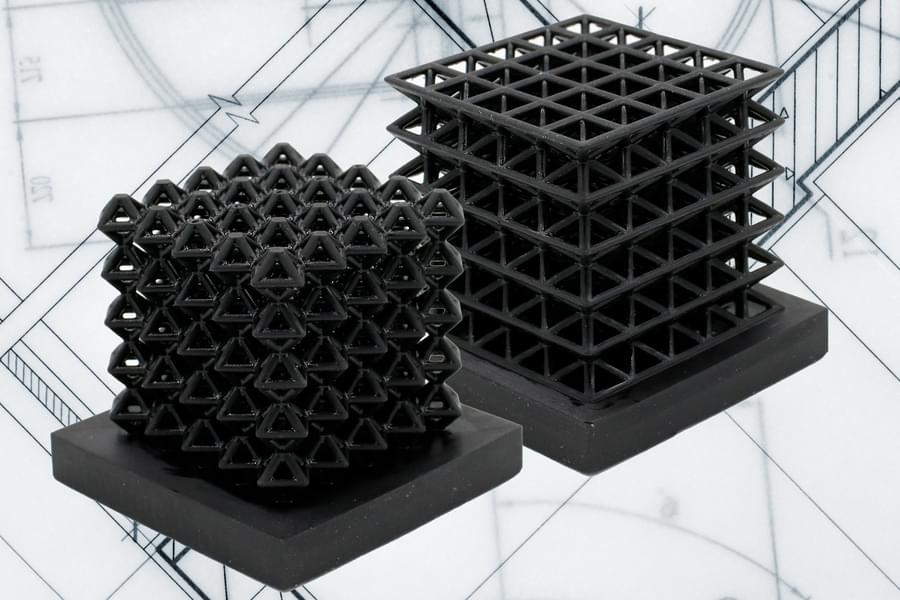
Category: materials – Page 215


Scientists create quality concrete with 100% tire-rubber aggregate
We’ve recently heard about efforts to replace some of the aggregate used in concrete with crumbled used tires. Now, scientists have succeeded in producing good quality concrete in which all of the aggregate has been replaced with tire particles.
In recent years, we’ve heard about efforts to replace some of the aggregate used in concrete with crumbled used tires. Now, however, scientists have succeeded in producing good quality concrete in which all of the aggregate has been replaced with tire particles.
Concrete consists of three parts: water, a cement which binds everything together, and an aggregate such as sand or gravel. That aggregate has to be mined from the ground, and is actually now in short supply in many parts of the world.
Discarded tires can be recycled to a certain extent, but often just end up sitting in landfills or getting burned.


New programmable materials can sense their own movements
MIT researchers have developed a method for 3D printing materials with tunable mechanical properties, which can sense how they are moving and interacting with the environment. The researchers create these sensing structures using just one material and a single run on a 3D printer.
To accomplish this, the researchers began with 3D-printed lattice materials and incorporated networks of air-filled channels into the structure during the printing process. By measuring how the pressure changes within these channels when the structure is squeezed, bent, or stretched, engineers can receive feedback on how the material is moving.
These lattice materials are composed of single cells in a repeating pattern. Changing the size or shape of the cells alters the material’s mechanical properties, such as stiffness or hardness. For instance, a denser network of cells makes a stiffer structure.

Specially oriented twisted bilayer graphene hosts topological electronic states
A sheet of magic-angle twisted bilayer graphene can host novel topological phases of matter, a study has revealed.
Magic-angle twisted graphene, first discovered in 2018, is made from two sheets of graphene (a form of carbon consisting of a single layer of atoms in a honeycomb-like lattice pattern), layered atop one another, with one sheet twisted at precisely 1.05 degrees with respect to the other. The resulting bilayer has unusual electronic properties: for example, it can be made into an insulator or a superconductor depending on how many electrons are added.
The discovery launched a new field of research into magic-angle twisted graphene, known as “twistronics.” At Caltech, Stevan Nadj-Perge, assistant professor of applied physics and materials science, has been among the researchers leading the charge: in 2019, he and his colleagues directly imaged the electronic properties of magic-angle twisted graphene at atomic-length scales; and in 2020, they demonstrated that superconductivity in twisted bilayer graphene can exist away from the magic angle when coupled to a two-dimensional semiconductor.

Scientists find ‘exciting’ links of Moon’s origin to Earth’s mantle
This is the first definitive proof that the Moon inherited indigenous noble gases from the Earth’s mantle.
The Moon has long been a source of fascination for humans. The discovery is an essential piece of the puzzle in understanding how the Moon was formed. ‘Tom Dooley’ is the only instrument in the world capable of detecting such low helium and neon concentrations. A new study has found that Moon inherited the indigenous noble gases of helium and neon from Earth’s mantle.
Researchers from Eidgenössische Technische Hochschule (ETH), Swiss Federal Institute of Technology Zurich, discovered the first definitive proof that the Moon inherited indigenous noble gases from the Earth’s mantle, according to a study published in the journal Science Advances on Wednesday.
“Finding solar gases, for the first time, in basaltic materials from the Moon that are unrelated to any exposure on the lunar surface was such an exciting result,” said Cosmochemist Patrizia Will, study lead researcher at the Washington University, St. Louis.
The Moon has long been a source of fascination for humans. However, it was not until Galileo’s time that scientists began to investigate it seriously.
Over the course of nearly five centuries, scientists proposed numerous, heavily debated theories about how the Moon formed.
Now, a team of geochemists, cosmochemists, and petrologists has shed new light on the Moon’s origin story.

Hubble Space Telescope captures stunning close-up of Orion Nebula
One of the most beautiful and spectacular parts of the night sky is the Orion constellation.
Herbig-Haro object HH 505 is around 1,000 light-years from the Earth. HH objects are bright patches of nebulosity associated with newborn stars. The photograph was created with 520 ACS images in five different colors to get the sharpest view ever. The Hubble telescope has taken a new magical image of the Orion Nebula.
One of the most beautiful and spectacular parts of the night sky is the Orion constellation. The Orion Nebula is one of the Milky Way’s most studied and photographed objects and a nest of material where young stars are being formed. Alnitak, Saif, and Rigel are floating in a large, dense cloud of interstellar dust and gas between the stars.
“This celestial cloudscape captured the colorful region surrounding the Herbig-Haro object HH 505,” read the European Space Agency’s (ESA) official website.
Herbig-Haro (HH) objects are bright patches of nebulosity associated with newborn stars.
The magnificent cloud is a valuable laboratory for studying star formation because of its close vicinity (1,344 light-years from the Sun). Its size and proximity, which spans 24 light-years, make it visible to the naked eyes, reported ScienceAlert on Sunday.
“This observation was also part of a spellbinding Hubble mosaic of the Orion Nebula, which combined 520 ACS images in five different colors to create the sharpest view ever taken of the region,” ESA documented.

For the First, 3D Printed Materials can Sense their Movement
3D printed material:
MIT researchers manufactured objects made of flexible plastic and electrically conductive filaments. Some varieties of 3D-printed objects can now feel, using a new technique that builds sensors directly into their materials. 3D printing can be considered printing, although not as it’s traditionally been defined. The method opens opportunities for embedding sensors within architected materials, a class of materials whose mechanical properties are programmed through form and composition.
The researchers also created 3D editing software, known as MetaSense, to help users build interactive devices using these metamaterials. The new technique 3D-prints objects made from metamaterial substances made of grids of repeating cells. It was designed to conform to a person’s hand. When a user squeezes one of the flexible buttons, the resulting electric signals help control a digital synthesizer.

New programmable 3D printed materials can sense their own movements
MIT researchers have developed a method for 3D printing materials with tunable mechanical properties, that sense how they are moving and interacting with the environment. The researchers create these sensing structures using just one material and a single run on a 3D printer.
To accomplish this, the researchers began with 3D-printed lattice materials and incorporated networks of air-filled channels into the structure during the printing process. By measuring how the pressure changes within these channels when the structure is squeezed, bent, or stretched, engineers can receive feedback on how the material is moving.
The method opens opportunities for embedding sensors within architected materials, a class of materials whose mechanical properties are programmed through form and composition. Controlling the geometry of features in architected materials alters their mechanical properties, such as stiffness or toughness. For instance, in cellular structures like the lattices the researchers print, a denser network of cells makes a stiffer structure.

This oddly-shaped Finnish cabin was made with cross-laminated timber to withstand subarctic cold!
This cabin in the woods is an otherworldly, all-black, geometric structure built to provide cozy refuge even in harsh Finnish winters. It was designed for a California-based CEO who returned home to Finland with her family to be closer to her ancestral land so she could maintain it. The cabin is aptly named Meteorite based on its unique shape and is set in a clearing surrounded by spruce and birch trees. The cabin is made entirely from cross-laminated timber (CLT) which is a sustainable alternative to other construction materials.